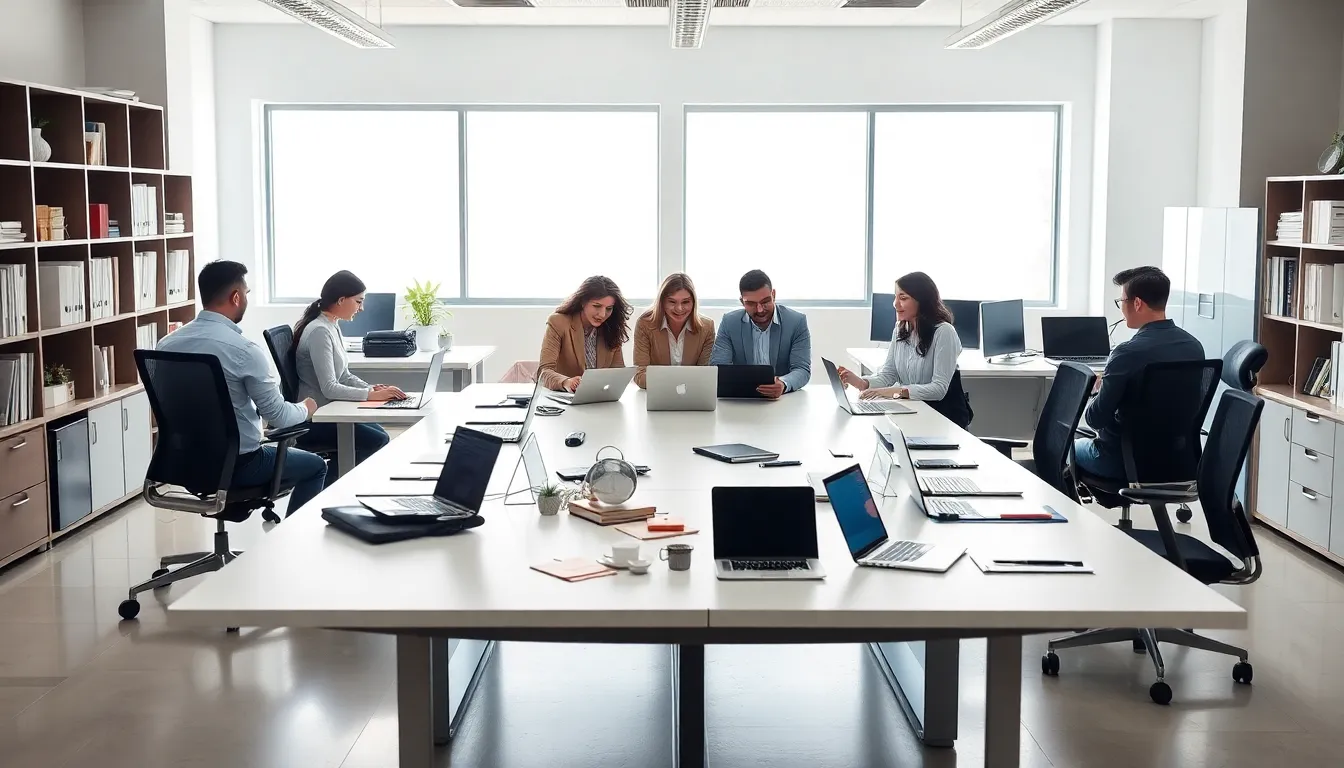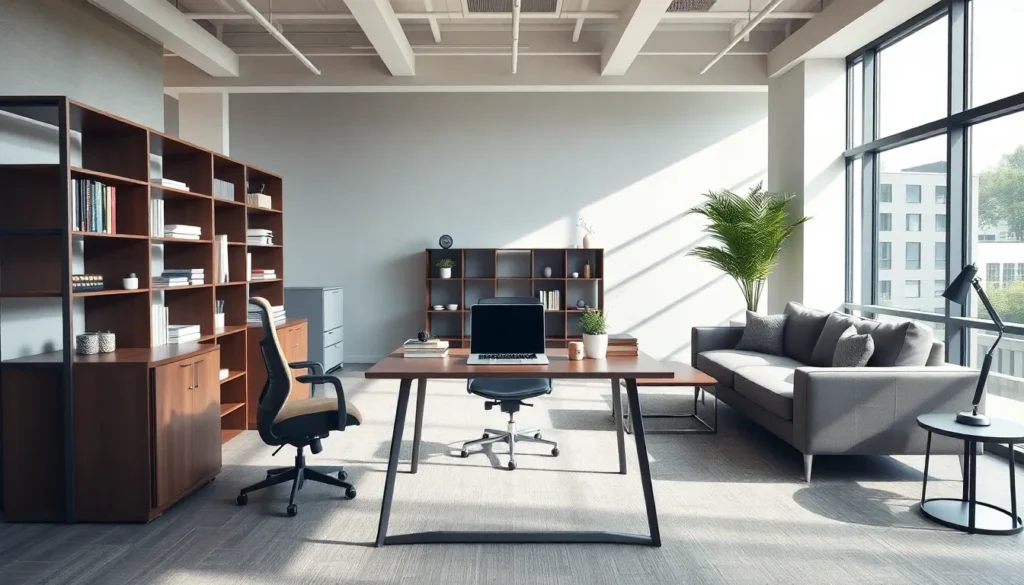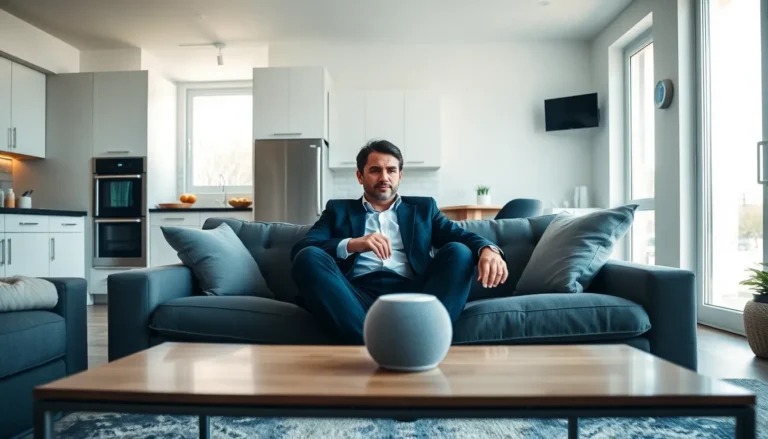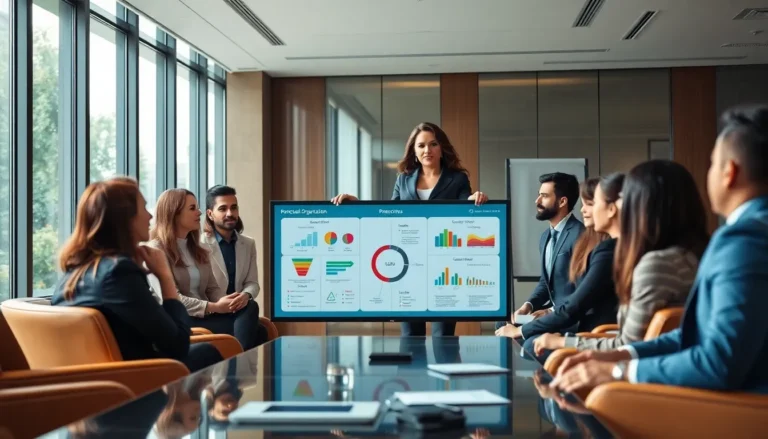Let’s face it: a chaotic office can turn even the most dedicated worker into a lost cause. Picture this: papers flying, pens mysteriously vanishing, and a desk that resembles a post-apocalyptic scene. Fortunately, office organization furniture is here to save the day. This article dives into why a well-organized workspace matters and how the right furniture can enhance productivity, lessen stress, and maybe even bring back that long-lost sense of tranquility. So, grab a coffee, clear your desk of excess clutter, and let’s get to organizing.
Table of Contents
ToggleImportance Of Office Organization

When it comes to workplace efficiency, organization is more than just a buzzword, it’s a necessity. Companies today are recognizing that an organized office set-up directly affects productivity. Think about it: when everything has its place, employees can find what they need without digging through piles of paperwork. This not only saves time but reduces stress, leading to better work quality.
Also, an organized workplace fosters creativity. Clutter offers mental distractions that stifle innovative thinking. An organized office creates an environment where ideas can flourish, allowing employees to focus on what’s essential: their tasks.
Beyond productivity, an organized office can influence employee morale. A clean, purposeful workspace can make employees feel valued, as if the business invests in their well-being. In contrast, a disorganized area could create feelings of neglect, leading to lower morale and, eventually, higher turnover rates. The importance of organization in the office can’t be overstated: it can revolutionize how employees feel about their jobs.
Types Of Office Organization Furniture
Choosing the right office organization furniture is crucial. It’s not just about aesthetics: function plays a significant role too. Here’s a breakdown of the main types:
1. Desks and Workstations
Desks are the centerpiece of any office. From traditional wooden desks to modern standing options, the style you choose can reflect company culture. Also, arranging workstations efficiently can optimize team collaboration. Sit-to-stand desks, for instance, encourage movement throughout the day, potentially boosting energy levels and keeping employees alert.
2. Storage Solutions
Storage solutions are lifesavers in maintaining an orderly environment. Think filing cabinets, shelving units, and storage boxes, these items help manage documents and supplies effectively. Incorporating under-desk storage can free up valuable workspace while keeping essential items accessible. Custom storage solutions can adapt to the unique needs of every office, ensuring a clutter-free atmosphere.
3. Collaborative Spaces
With remote working becoming more common, creating collaborative spaces within an office is critical. These areas should foster teamwork by offering comfortable seating and functional furniture, from meeting tables to lounge chairs. Designing inviting collaborative areas encourages spontaneous brainstorming and reinforced team dynamics.
Selecting The Right Office Furniture
Choosing the perfect office furniture isn’t a one-size-fits-all affair. Several factors play into making the best decision:
1. Assessing Your Office Space
Before diving into purchasing office furniture, assessing your available space is essential. Measure dimensions accurately, noting potential challenges such as wall outlets or windows that might impact layout. An open floor plan can maximize flexibility, while smaller spaces might require multi-functional furniture that doesn’t cramp style.
2. Understanding Employee Needs
It’s also vital to consider employee needs. For instance, some may prefer flexible workstations, while others thrive in structured environments. Surveys or discussions can provide valuable insights into what employees find most comfortable and conducive to their work. Forming a collaborative approach ensures satisfaction and boosts morale.
3. Budget Considerations
Budgeting is arguably the most critical element. Investing in high-quality furniture can save money in the long run, as durable items require less frequent replacement. But, it’s essential to strike a balance between quality and cost. Explore various vendors and materials, keeping an eye out for sales without sacrificing standards. Remember, quality often trumps quantity.
Trends In Office Organization Furniture
The landscape of office organization furniture is always evolving. Here are some current trends that every business should keep in mind:
1. Sustainable Materials
As awareness of environmental issues grows, businesses are increasingly incorporating sustainable materials into their furniture. This includes items made from recycled or responsibly sourced wood, bamboo, and other eco-friendly materials. Not only does this help the planet, but it can also appeal to eco-conscious employees who value corporate responsibility.
2. Modularity and Flexibility
In today’s fast-paced world, offices are rarely static. Modular furniture design allows organizations to adapt their workspace to changing needs effortlessly. This flexibility enhances collaboration and maximizes efficiency, accommodating everything from team meetings to individual work.
3. Smart Technology Integration
As technology advances, so does office furniture. Furniture that integrates technology seamlessly, think desks with built-in chargers, shelving with LED lighting, and collaborative spaces equipped with screens, can significantly enhance the working experience. This not only aids productivity but also keeps the office feeling modern and relevant.



